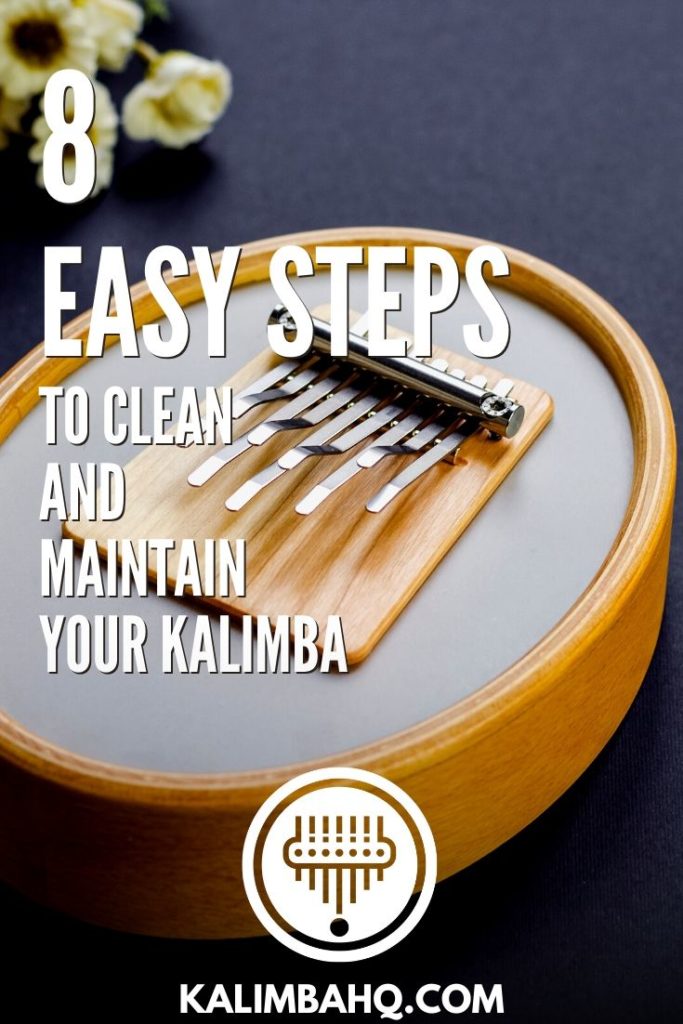One of the most important things you should remember about kalimba is maintenance. As with any other instrument, you will need to take care of your kalimba if you want it to last for a long time and to keep the sound quality.
Fortunately, cleaning and maintaining the thumb piano is not rocket science, and you’ll be able to do it by yourself. The only important thing is to perform regular cleanings to ensure that the kalimba is always in perfect shape.
How To Clean Wood
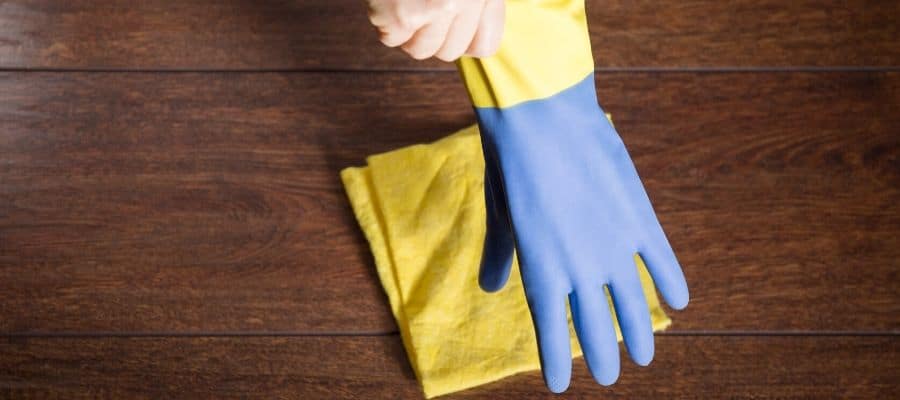
Kalimbas are mostly made out of wood, and the process is similar to cleaning any other wooden instrument like a violin or guitar. Of course, there are other types of kalimba as well, and we will talk about them later, but mostly, kalimbas have a wooden resonator that you will need to clean and maintain.
One of the main problems with kalimbas is that you’ll never know what type of products the manufacturers used unless you get a custom instrument from a craftsman you know.
But one thing that you can easily find out is what type of wood is used to create your kalimba. This will be the primary deterrent on what type of product you’ll use to clean the instrument.
If we talk about regular cleaning, which you should do every couple of weeks, you can use a dry cloth to ensure that there isn’t dust or grime piled on the surface of the kalimba.
However, every once in a while, you should perform a major cleaning, where you can use different types of products. The first one is with a finish, which you will recognize by the shiny surface of the wood or different color.
Regardless of the type of finish, you will still need to “feed” the wood to make it resonant. Oils and butter are a great way to keep the wood fed, but be sure not to overfeed it.
One of the examples you can try for unvarnished instruments is shea butter or almond oil you can check on the links below.
You can always “wash” the wood using a paper towel or a piece of cloth dampened in warm water. If you want, you can also add a bit of soap in water, to ensure that everything is spotless.
It is important to remember to be gentle since you don’t want to remove waxes, oils, or finish. If you use warm water for cleaning the kalimba, wipe it with a dry cloth or towel after you finish.
How To Clean Tines
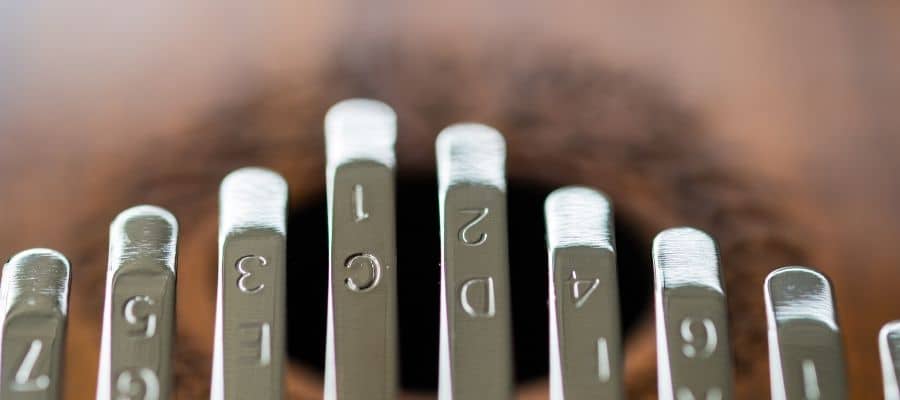
Cleaning wood is only one step of the whole process. As you can probably guess, you will need to clean the tines as well. Now the main problem with tines is that you will rarely know the exact materials used to create them.
Manufacturers will almost always use some kind of steel, and you will often find spring steel or “ore” steel.
For regular bi-weekly cleanings, you can use a cleaning cloth to remove dust or grime. If you clean your kalimba regularly, you won’t have any problems with detailed cleaning every couple of months.
When it comes to products, you can use warm water with a little bit of soap. The only important thing for this method is to wipe the tines or dry them to avoid rust.
Most commonly, there are two types of tines on the kalimba. The first one is painted. If your tines have paint on it, using a damp cloth will be enough for cleaning. You won’t need to use any special products.
As with any other method, ensure that the instrument is completely dry once you finish with your cleaning.
The second type you might encounter is without paint. The easiest way to clean this type of tines is by using an eraser. Yes, you read it right.
The eraser designed for erasing ink can do wonders on tines. Since the eraser itself is a bit abrasive, it will both clean and polish the tines. The reason why you can use an ink eraser is that it’s made of sand and rubber which will be able to clean the metal in no time.
Finally, you can also use mineral oil for cleaning the metal, but be sure to use it on metal only. These types of products are not working well with wood.
How To Prevent Tines From Rusting
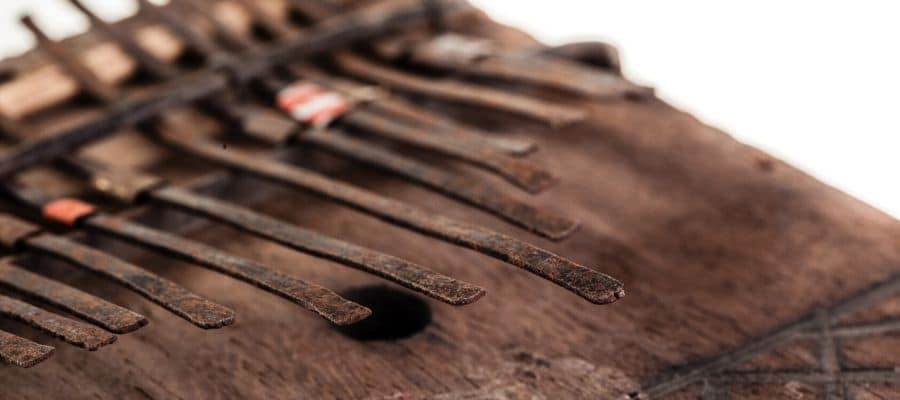
The most common problem that can happen to tines is rust. Rust can appear on tines if they are exposed to oxygen and moisture. Our skin has its own oils, and many people sweat while playing which can, in combination with oxygen, lead to rust.
So, how do you prevent the rust from appearing on the tines? The only way to prevent the tines from rusting is by cleaning the kalimba properly and regularly. Ideally, you would wipe the instrument and tines after each playing session.
The whole process will take you a couple of seconds, and you’ll be able to avoid unnecessary repairs or rust.
Using any of the methods I mentioned above will do wonders, and you won’t have to worry about rust appearing on any metal surface on the kalimba. It is important to remember to dry the tines if you are using water or any other product for cleaning them.
How To Remove Rust
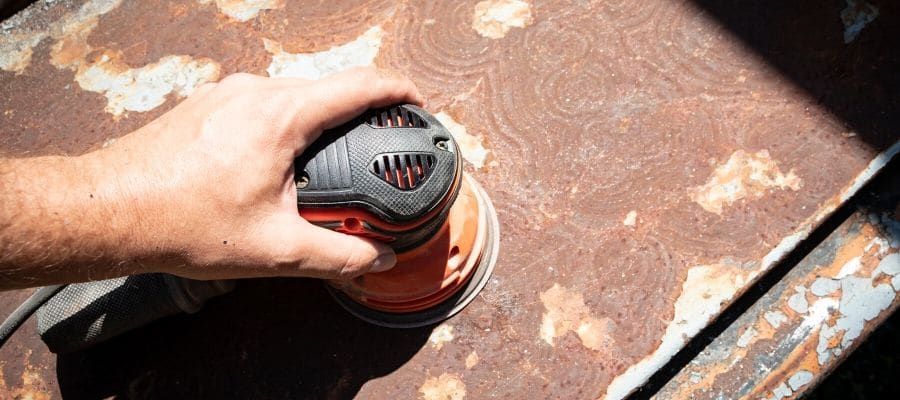
You might wonder if there is anything you can do to remove rust that already appeared on your instrument. The answer is yes. There are several methods you can try, and they can be helpful if the instrument is not completely ruined.
Now, rust on tines doesn’t mean that you did something wrong, and you might have just forgotten about the humidity in your home or city. Regardless of the reason, you will need to act as soon as possible to avoid any further damage to your instrument.
But before I go any further, you don’t need to fear for your instrument’s health. Even if there is a bit of rust on the tines, there is a chance that there won’t be any difference in sound. The only issue you might have with the kalimba is visual.
So, let’s talk about cleaning. Based on the level of rust on the tine (or tines), you might need to take the instrument apart. The easiest way to remove rust is by using steel wool, mineral oil, or sandpaper. If there are only a few spots, you could probably use the eraser for the ink to remove it.
It is possible for the painted tines to show signs of rust as well, and if this is the case, you might need to remove the paint, to properly clean the tines. However, if this seems too problematic for you, you can always repaint tines, and you won’t be able to see any rusted tines.
Maintaining The Instrument

Maintaining kalimba is one of the most important things you need to do. I already mentioned how great it would be if you could wipe it after every session, but there are several other things you should consider.
Taking care of your kalimba also means finding a place to store the instrument while you’re not playing it. Some models come with a protective case, and if you don’t have one, you should definitely consider getting one.
Not only will the case protect the instrument from damage, but you can also add a silica gel inside to store it with the instrument as well.
Another thing important for the maintenance of the kalimba is tuning. Now, I won’t go in-depth on how to do it, but you should always keep your instrument in tune if you want it to sound great.
You can always get a moisturizer which will allow you to control and monitor the humidity level of the case or wherever your instrument is stored.
Furthermore, you should always let your instrument “get used” to a new temperature. If you were traveling, you might have gone from hot to cold or vice versa. Always allow the case and the instrument to adjust to the new temperature before opening it and playing.
It is always important to take care of the kalimba, and if you follow these steps, you are likely to avoid any problem and unnecessary repairs.
Besides protective cases, you can always get yourself a hygrometer to ensure that the humidity is always right and that there is nothing to worry about.
Humidity
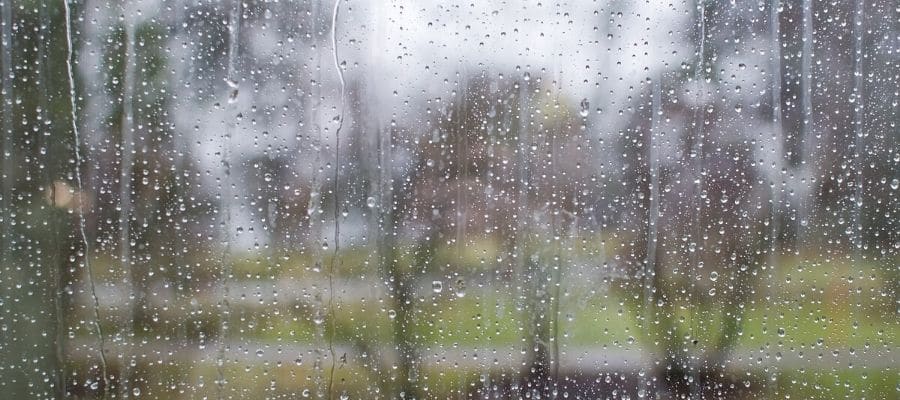
Since I already mentioned humidity, there are several factors and ways to regulate it. The main problem with kalimba is your location. Based on where you live, you might have high or low humidity, and it can be different from what wood is used to.
If the wood is from a tropical part of the world, anything other than tropical might cause problems.
Now, there are several ways to regulate humidity, and if you already have a hygrometer, you can check the levels and you’ll know what to do. The easiest way to humidify your room is to take a dish and fill it with water.
The water will evaporate, and you will notice that the air is less dry. But the main problem with this method is that you will have no control over how fast the water will evaporate. Silica gels can do wonders, and you can always find sensory beads.
Humidifiers and dehumidifiers are an obvious choice, but they can be costly, and you might not want to invest that much. Either way, humidity can lead to rust, but it can be important for wood as well.
A perfect humidity for kalimba is between 40% and 60% and temperatures between 65 and 78 degrees Fahrenheit.
Since changing your location for the sake of kalimba might seem too much, adding or removing humidity is probably your best option.
What To Avoid
Caring for kalimba is not the most difficult thing in the world, and occasional wiping can do wonders. However, there are several things that you need to avoid if you want to keep your instrument in perfect shape.
The first thing is to avoid leaving your kalimba outdoors or in a vehicle for a longer period of time. Inside of a car can get quite hot, and if you can feel it, so can your instrument. Higher temperatures can cause the glue to become weaker and it might even ruin the instrument.
The same applies to leaving it outside. You should never leave kalimba in sunlight as well for the same reasons. Needless to say, rain can also ruin the instrument. Leaving it in the rain can cause the tines to rust, and wood might get bloated which will make it unplayable.
When it comes to cleaning, the best idea would be to avoid using alcohol or any other harsh or strong chemicals. While these can be great for cleaning the bathroom, they might destroy something as delicate as a kalimba.
Always avoid using products if you are allergic to it. Furthermore, bitter almond oil can be toxic, so it’s better to avoid it. Other types of oil that might cause an allergic reaction are macadamia nut, avocado, linseed, olive, walnut, and mineral oils for wood.
Some of these might cause a severe allergic reaction for some people like peanut or groundnut oil.
Finally, you should never use too much force while cleaning your thumb piano. Even if you use a soft cloth, too much force can damage the finish of the instrument. Take your time and be gentle. This way, the kalimba can remain both clean and beautiful.
Other Types Of Kalimba
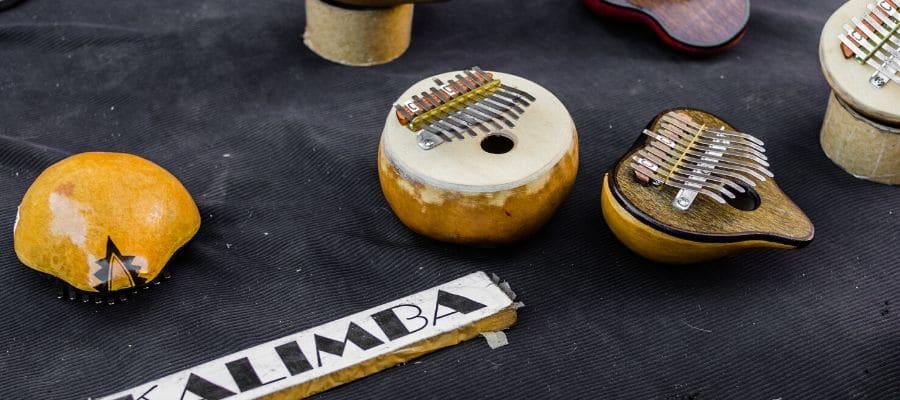
You probably noticed how I talked about kalimbas made of wood only. However, there are other materials used to make this instrument as well. The majority of modern kalimbas are made of wood, but it is still possible to find something else.
If your kalimba has a body made from any non-wood material, you might need to take a different approach to clean and maintenance. The most common type of kalimba that doesn’t have wood is acrylic. These are usually transparent and without a resonating box.
If you have one of these, or you plan on buying one, the cleaning is quite simple. You won’t have to worry about humidity, and you can use lukewarm water with a bit of neutral soap.
Similarly to other types, it is always best to avoid chemicals like window cleaners for example. You should also be gentle while cleaning it since it is so much easier to scratch the surface and cause damage.
Moreover, if you find kalimba that is made of metal, and not only tines but the body as well. You should follow the instructions for cleaning the tines. Of course, you should always dry it before storing it, and always wipe it with a dry cloth once you finish with cleaning.
Summary
Maintenance should be an important part of every kalimba owner. If you want your instrument to last for a long time, you will need to take care of it. There are two important parts when it comes to cleaning and caring for the thumb piano. The first are tines, and the second is the body.
Tines are usually made of steel, and with proper care, you can avoid rust or any damage to it. Sandpaper, steel wood, and even an ink eraser can do wonders for tines. It is important to remember to always dry them, and use dry cloth after cleaning it.
If you want, you can use water with a bit of soap to wipe the tines every couple of months, but be sure to properly dry them once you finish.
The other important part is, of course, the body. Usually, bodies of kalimba are made of wood, but you can also find other materials. Based on the type of wood, you can use some oils, or warm water to clean them.
Finally, storing your instrument properly plays an important role in the instrument’s health. If you can get a protective case, you will have a much easier time storing it, and you will be able to control the humidity of the instrument as well.
If you found this article useful you may want to save this pin below to your Kalimba board
